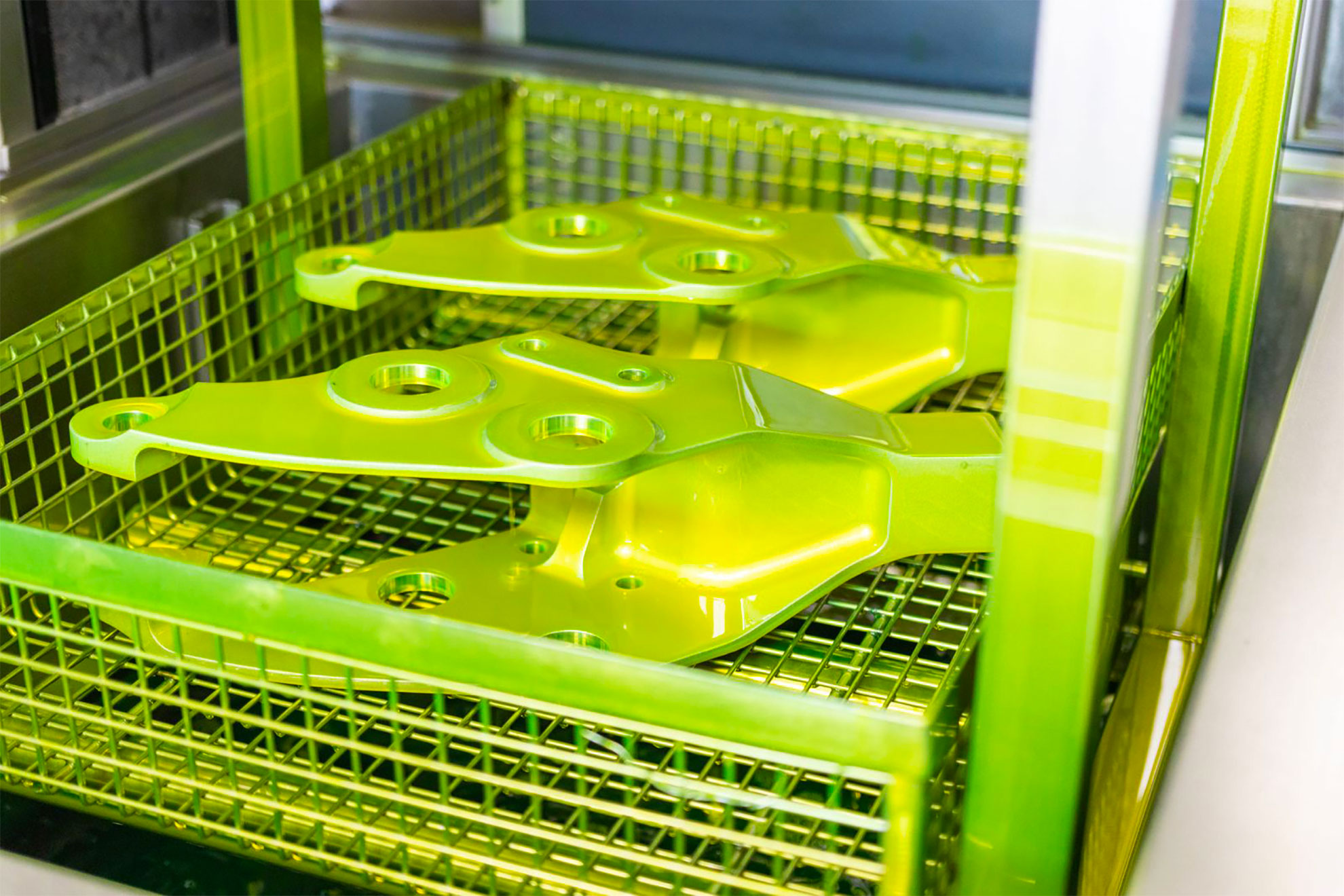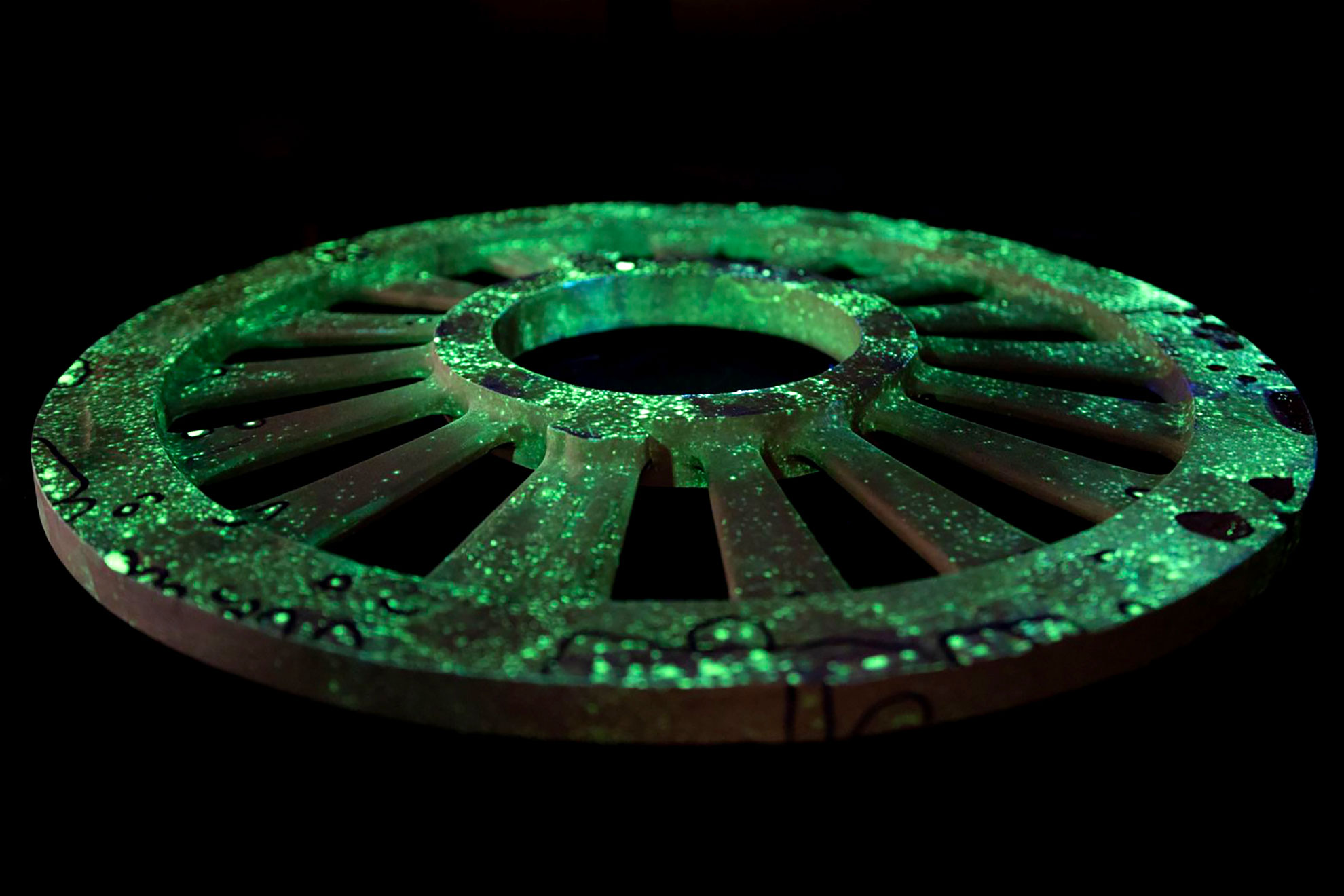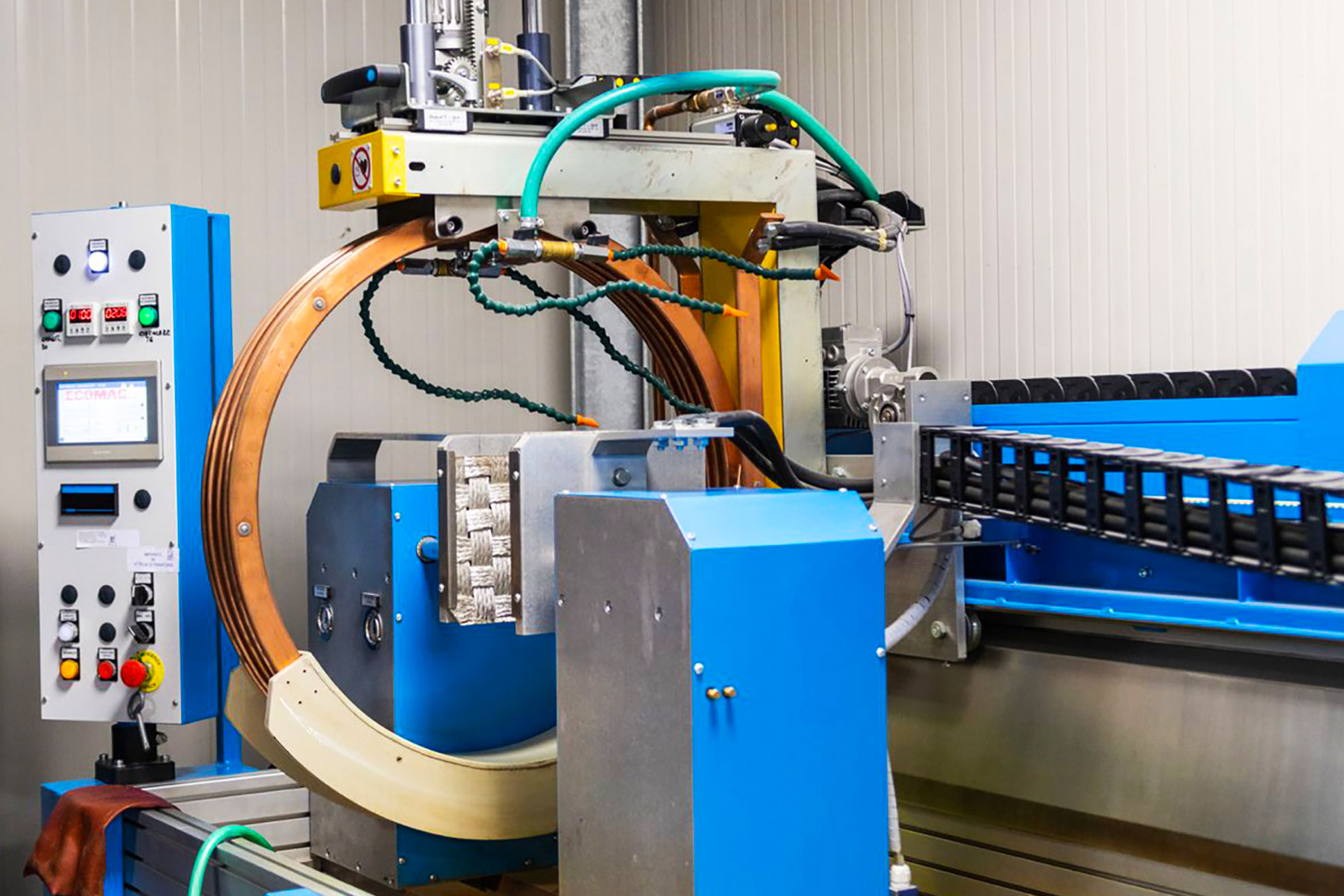The inspection with liquid penetrants is a nondestructive testing (NDT) method used to search for discontinuities on the surface of materials. The method is based on the ability of certain liquid substances (usually organic-based) to penetrate by capillary action, within small discontinuities present on the surface under examination. After an appropriate contact time, in which the liquid penetrates into any discontinuities on the surface, the excess penetrant is removed.
Then, with the help of a special detector or developer product, the penetrant present in the discontinuity tends to resurface toward the surface thus indicating the presence and location of the discontinuity. The penetrant after application of the detector is not visible to the naked eye, but requires the use of a black light or Wood’s lamp to highlight its fluorescence.
The control with penetrating liquids makes it possible to highlight only open discontinuities at the surface such as micro-cracks, spins, overlaps and porosity. It can be applied to virtually all workable metals and their alloys, glass, ceramics and plastics in general.
Advantages of the method are:

Non-destructive inspection by means of magnetic particles makes it possible to detect with high sensitivity in ferromagnetic materials all kinds of discontinuities even if they are not open to the surface but close to it. The inspection is based on the fact that when the object to be inspect is magnetized, discontinuities that are arranged transverse to the magnetic field result in a deviation of the magnetic field flow lines themselves.
To highlight the defect, surfaces are sprayed with suitable suspensions of ferromagnetic, colored or fluorescent powders. The particles eventually align along the magnetic field flow lines, forming a “profile” of the discontinuity that generally indicates its location, size, shape and extent. Particles thus concentrated on the defect are made visible by illumination with a Wood’s lamp.

